The sound of the words “sustainable plastics” seems contradictory considering the statistics: after the first use only 9% of plastic worldwide is recycled, most of it ends up in landfills, some is incinerated, and nearly 30% is thrown in the environment as trash.
But the tide is slowly turning as governments and businesses worldwide are pushing back against single-use plastics and banning plastic shopping bags. Communities are funding initiatives to reduce plastic use and encourage recycling, while consumers are slowly changing habits and increasingly viewing plastic negatively.
What does this mean for your company as it adopts more 3D printing with plastics?
Publicize Your Sustainable Commitments

Using plastics responsibly – in other words working toward eliminating plastic overuse and waste, using recycled and plant-based plastics wherever feasible, and having a company-wide plan for recycling – is a mantra smart companies are adopting to not only be more sustainable, but telegraph a sustainable public image.
Take a cue from 3D printing companies, such as Materialise, EOS, and Stratasys that are working to stay ahead of the growing societal, corporate, and governmental focus on environmental consciousness. They’ve hired sustainability executives, gained environmental certifications, and issued policies that articulate their commitment to the environment.
3D printer and materials manufacturer EOS declares in its environmental policy its “dedication to preserving the environment, minimizing our environmental impact, continuously improving our processes, and advancing our sustainable practices.”
Company responsibility statements that include recycling commitments are more widespread today since consumers increasingly say sustainability and a business’ consciousness plays a role in purchasing decisions. This is especially true when consumers are buying a product made of plastic.
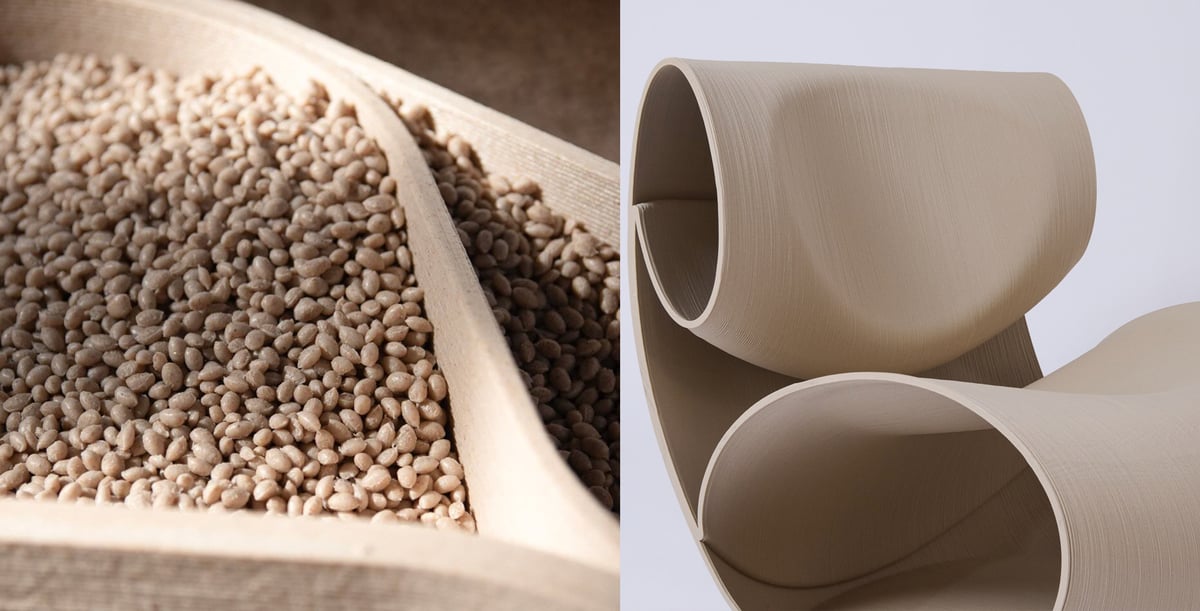
In an era when consumers have moved away from plastic water bottles in favor of glass ones and carry their lunches in stainless steel boxes instead of Tupperware, there has to be a good reason to buy plastic.
“As consumers modify their own behaviors to be more environmentally responsible, they look to brands and industry at large to do the same,” says Liat Arad, VP of marketing at UBQ Materials, a sustainable plastics manufacturer. “The advantage of using recycled plastic and sustainable materials is to be on the right side of history.”
Even very small businesses selling 3D printed products have found sustainability to be a major customer draw.
Rob Leenen, managing director of 3D printed lamp and furniture company, Recozy, says his company’s environmental goals resonate with a growing consumer preference for locally produced, sustainable products. Recozy products are all made from recycled materials and the company will even take back your lamps and other items at the end of their life and properly recycle and reuse the raw materials in keeping with the company’s circular economy philosophy.
Make Green Material Choices
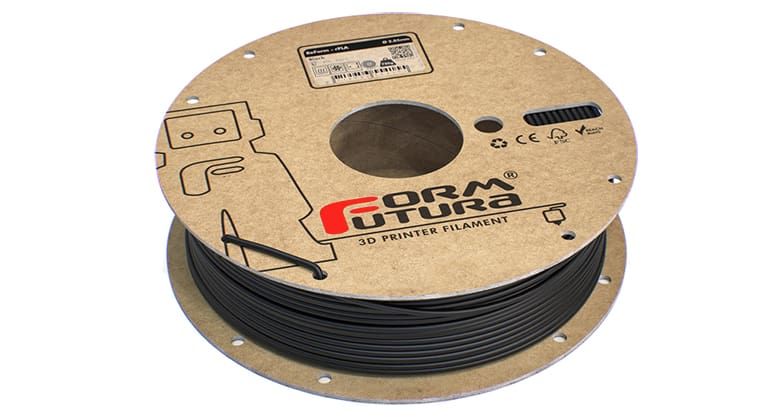
So how can your company grow its use of 3D printing while also being environmentally responsible? One solution is to make smart material choices.
Plant-Based Plastic Material
Plant-sourced plastic called PLA is already the most popular type of plastic filament used in desktop 3D printing. Making PLA emits a fraction of the greenhouse gases compared to other plastics, as well as being less energy intensive to manufacture, according to material manufacturer NatureWorks. So if you’re using PLA instead of fossil-fuel-derived plastics, such as ABS and PETG, you’re already on the road to 3D printing responsibly.
But, arguably, just using PLA filament is not enough. The vast majority of 3D printed PLA is not recycled and contrary to popular beliefs, PLA is not compostable and not recyclable with normal household plastic waste; it requires industrial processing to break down. Unfortunately, companies that will recycle your PLA waste, supports, failed prints, and end-of-lifecycle parts, are few. So, the greener option would be using recycled PLA.
Recycled Plastic Material
“Companies that 3D print are seeking out more environmentally friendly materials, especially for prototyping and modeling,” says Richard Silberfeld, president of GreenGate3D, which manufacturers recycled filament. “There’s defiantly an awareness of environmental impact among 3D printers,” he says. “We have customers specifically trying our filament for that reason.”
In fact, there’s a growing number of companies now making plant-sourced and recycled products for additive manufacturing to meet a growing demand.
UK-based Filamentive, which makes filament with recycled materials, has a growing list of corporate customers that buy sustainable material to comply with company-wide sustainability initiatives, says founder Ravi Toor. Many of his education customers buy green plastics specifically to meet university-wide guidelines on sustainable procurement.
“Our 3D printing bureau customers see recycled materials as a unique selling proposition,” says Toor. “They can highlight their use of sustainable materials as a marketing tool to win new business.”
As of April 2024, Filamentive now offer existing customers free PLA 3D printing waste recycling in the UK through recycling partner 3D Printing Waste.
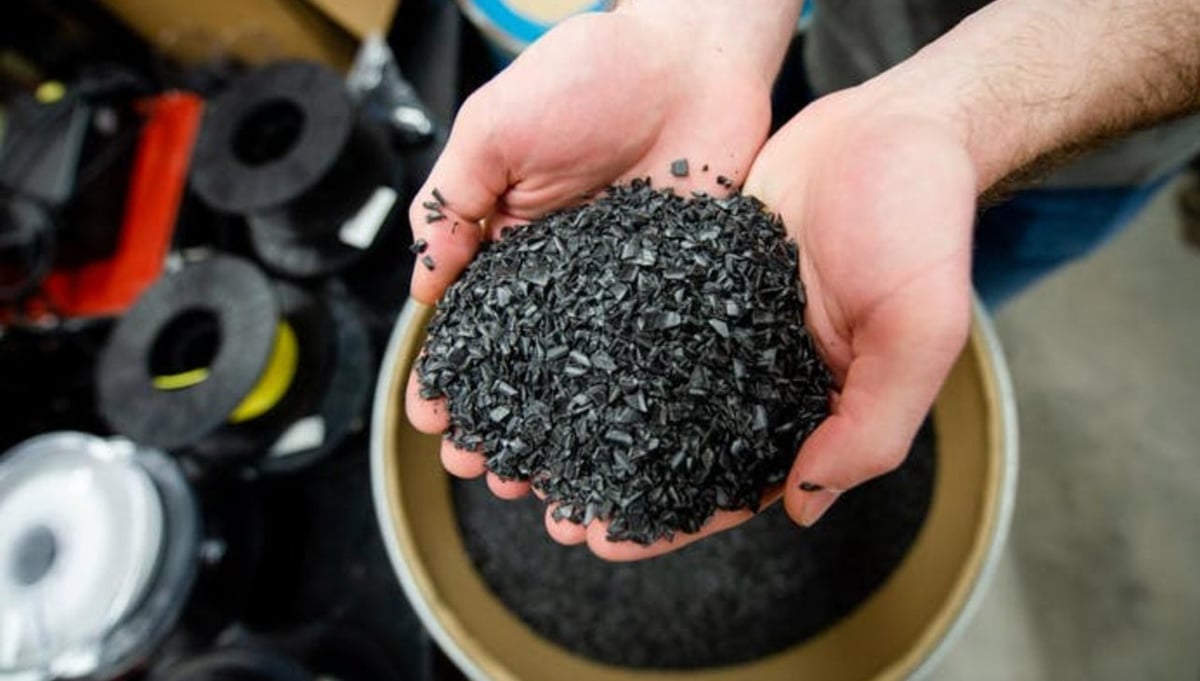
Print From Your Own Plastic Waste
Another way to become a more sustainable with your 3D printing is to invest in your own plastic shredder and then either print from the plastic shreds or make filament out of it with a filament maker. Better yet, use one of the growing number of 3D printers that can print with shredded plastic waste instead of filament as the base material.
On the industrial level, there are dozens of commercial plastic waste shredders on the market because the machines are used widely in other industries and they’re perfectly suitable for shredding plastics to make into 3D printing filament or to feed directly into vat-equipped 3D printers. For home use, makers have long used a simple blender or meat grinder to chop up their 3D print supports and failed prints, but that’s not a long-term or high-volume solution.
Does Sustainable Filament Sacrifice Quality?
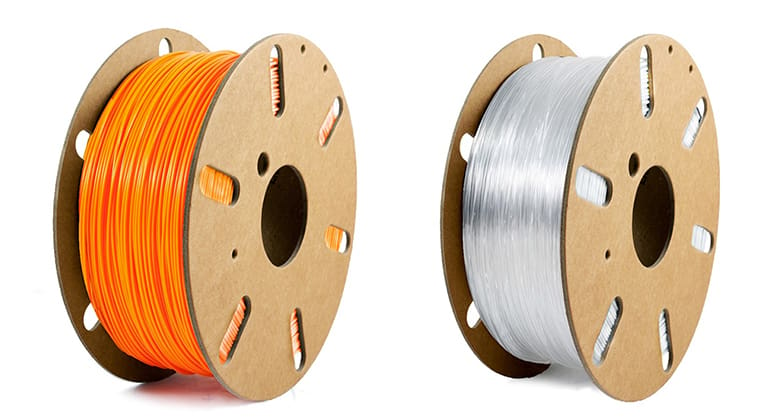
All 3D printing plastic filament, from PLA to ABS to nylon, comes in a range of price points and quality grades, whether it’s recycled or virgin. Better filaments come with a technical data sheet detailing the strength, flexibility, and dimensional accuracy among other qualities you can expect from the material.
Recycled filament is also tested and many sources include data sheets with the expected performance characteristics of the material. The Filamentive rPLA, for example, made from factory waste streams as opposed to virgin pellets, is sold with a data sheet outlining its specifications. “All users of rPLA can feel good about reducing environmental impact, whilst being confident that the print quality will still be one of the best on the market,” the company says.
Makers of recycled plastics say that their products are generally on par with non-recycled plastics. Of course, each time a polymer is heated and then extruded, the mechanical properties are degraded. A 2018 paper found “significant deteriorations in most mechanical properties after three recycling cycles.” However, several manufacturers mix virgin plastic with recycled to achieve more reliable performance characteristics and research has proven that adding certain chemicals to recycled plastics can restore and even improve their performance.
Recycled plastic filament aren’t widely adopted for 3D printing applications that require specific mechanical properties. “But if the application is mainly visual prototyping, material performance is less of a priority,” notes Toor.
As demand and investment in recycled materials surges, the limitations of recycled materials and the performance gap will slowly close, says Arad. “Even now, there are many applications in which switching to recycled plastic is a no-brainer. These include non-food contact products and products in which appearance matters more than functionality.”
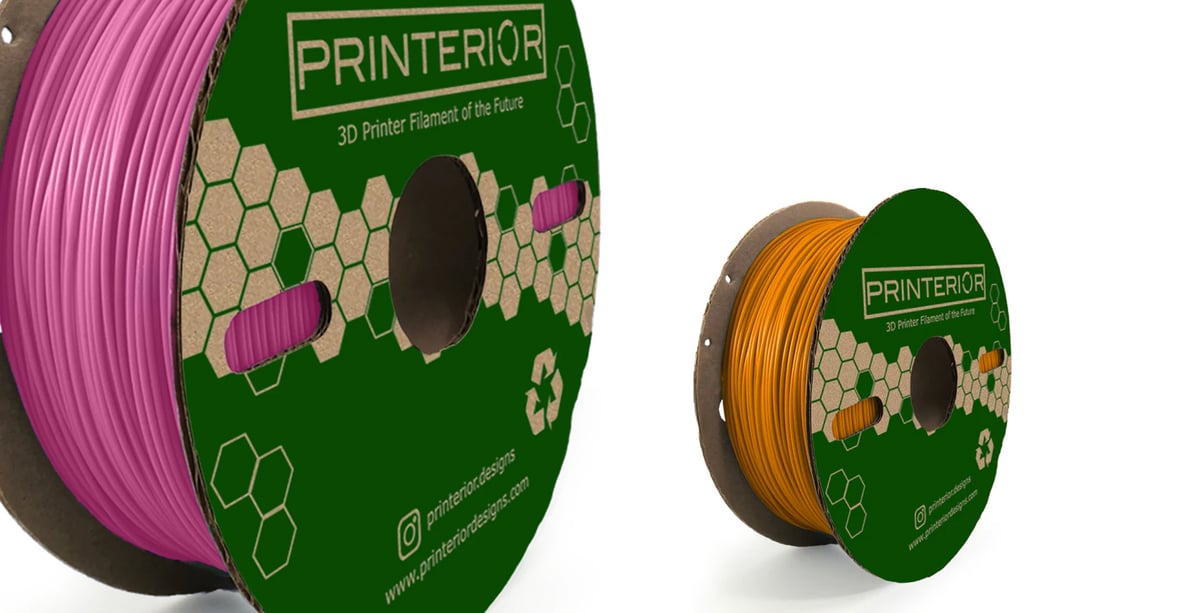
“As we see it, you don’t have to choose between performance or a sustainable material,” says Dan Sawyer, business development leader at NatureWorks. “Both attributes are possible and are responsible for driving adoption of in the 3D printing market.”
Back in 2002, NatureWorks built the first commercial facility for PLA production in the world. Since then, it has been successful in providing an alternative to fossil fuel-derived plastics to a wide range of industries.
“In our experience, environmental credentials are never the sole reason for choosing a material. Filament producers and end-users won’t choose a material unless it performs as well or better than the incumbent in their application. We’ve seen this criteria both in start-ups and large companies,” says Sawyer.
Sustainable Materials are the Future
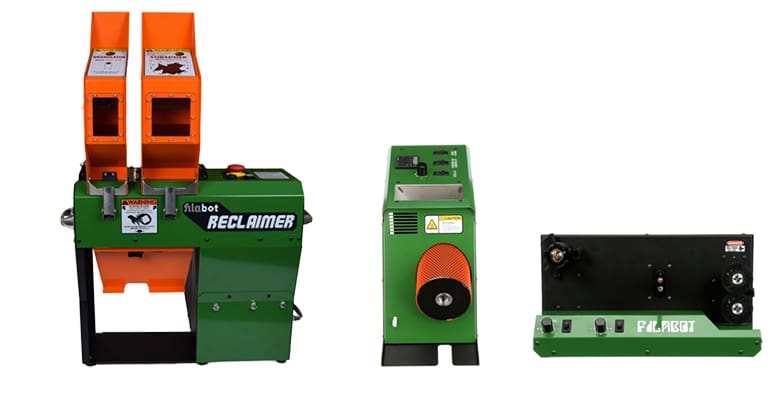
There’s no denying the global plastic problem. From plastic litter to lack of large-scale recycling programs, every industry that uses the material is headed to decision point: How to use less plastic?
“There will be no reason to 3D print with virgin plastics once sustainable materials are widely available,” says Arad at UBQ Materials. “We believe that 3D printing with sustainable materials will become the new standard.” Availability of recycled filament, although growing, is still an obstacle.
One early provider of a range of recycled filaments, Refil, stoped production in early 2020 after five years on the market. Casper van der Meer, the former head of Refil, who now focuses on sustainable design work at Better Future Factory, says the company may have just been ahead of its time and could not overcome the public perception that recycled meant inferior.
Today, Better Future Factory helps businesses transform sustainable ideas into tangible products. It helps companies turn waste into new products and optimizing existing products, such as recycled and reusable take-our packaging and even maniquens made from old plastic hangers.
On the horizon, is an increased use of 3D printing with recycled and sustainable-material plastic scrap and pellets, instead of filament, which will reduce the energy and emissions from the middle step of forming plastic scrap into filament.
“Once engineers can figure out how to print through pellets with desktop printers, filament companies will struggle,” says Silberfeld. Several initiatives are underway to bring to market more pellet printers.
“I believe we will also see more DIY recycling methods,” says Toor, which include desktop extrusion equipment. A handful of companies offer recyclers, such as the Filabot Reclaimer, the ProtoCycler, and the 3devo plastic shredders and filament makers, that smash failed prints into smaller pieces, melt them down, and create new filament from them.

Whether its using filament from renewable sources (PLA), recycled filament, recycling your own 3D printed parts, or establishing a company-wide commitment to responsible plastic use, adopting additive manufacturing and eco-friendly practices go hand in hand.
Lead image source: The Refil brand of recycled filament from the Better Future Factory is no longer manufactured.
License: The text of "Print Smarter, Print Greener: How Eco-Friendly Filament Can Boost Your Business" by All3DP Pro is licensed under a Creative Commons Attribution 4.0 International License.
